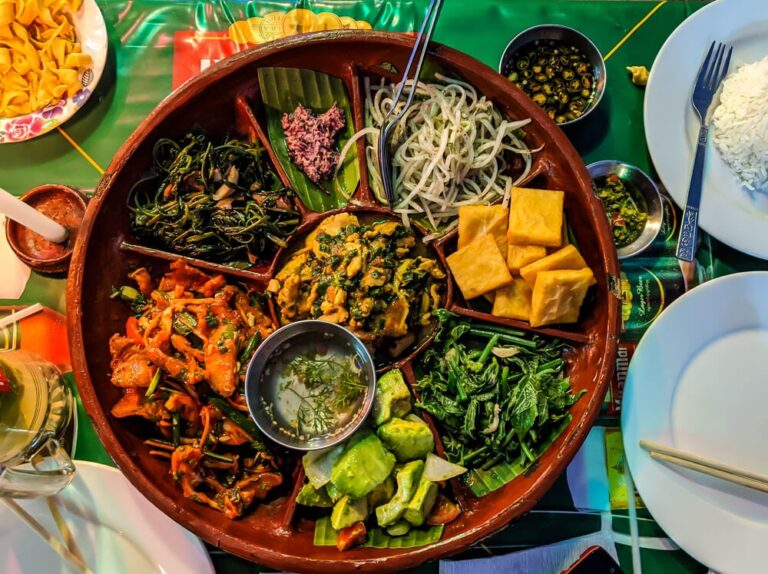Introduction: Myanmar’s diverse culinary scene
Myanmar, also known as Burma, is a country in Southeast Asia with a rich and diverse culinary scene. Its cuisine draws influences from various neighboring countries, including China and India. These two countries have played a significant role in shaping Myanmar’s culinary landscape, resulting in a unique blend of flavors and techniques.
Myanmar’s cuisine incorporates a wide range of ingredients, such as rice, seafood, meat, vegetables, and various spices. It is known for its use of bold flavors and aromatic herbs and is often described as a fusion of Indian, Chinese, and Southeast Asian cuisines.
Historical context: How Chinese and Indian cuisine arrived in Myanmar
Chinese and Indian cuisine has been present in Myanmar for centuries, with their influence dating back to the early trade routes between the two countries and Myanmar. Chinese immigrants arrived in Myanmar during the 19th century, and their cuisine quickly became popular among the locals.
Similarly, the Indian influence in Myanmar’s cuisine can be traced back to the British colonial period in the 19th and 20th centuries when many Indians migrated to the country. They brought with them their culinary traditions, which have since become an integral part of Myanmar’s food culture.
Influence on Myanmar cuisine: Ingredients, techniques, and dishes
Chinese and Indian cuisine has a significant influence on Myanmar’s cuisine, particularly in terms of ingredients, techniques, and dishes. Chinese cuisine has brought in soy sauce, noodles, and stir-frying techniques, which are used in many Burmese dishes today. Indian cuisine, on the other hand, has introduced spices such as cumin, coriander, and turmeric, which are widely used in Myanmar’s curries.
In addition, Chinese and Indian cuisine has also influenced popular dishes in Myanmar, such as samosas, noodles, and dumplings. These dishes have become staples in Myanmar’s food culture and are often enjoyed as a snack or a main meal.
Popular Chinese and Indian dishes in Myanmar
Chinese and Indian cuisine has also contributed to the popularity of specific dishes in Myanmar. Chinese-inspired dishes such as mohinga and laphet thote (fermented tea leaf salad) are among the most popular dishes in the country. Indian-inspired dishes such as biryani, chapati, and dosa are also widely enjoyed in Myanmar.
Fusion cuisine: Examples of Chinese and Indian influences in Burmese dishes
Fusion cuisine is becoming increasingly popular in Myanmar, as chefs experiment with new flavors and techniques. Chinese and Indian influences can be seen in many Burmese dishes, such as ohn no khao swè (coconut chicken noodle soup), which combines Chinese-style noodles and Indian-inspired spices. Another example is balachaung, which is made with dried shrimp and other ingredients and is used as a condiment in many Burmese dishes.
Conclusion: The enduring legacy of Chinese and Indian cuisine in Myanmar
The influence of Chinese and Indian cuisine in Myanmar is evident in its diverse culinary scene. Their legacy has resulted in a unique blend of flavors and techniques that have become an integral part of Myanmar’s food culture. While traditional Burmese dishes remain popular, fusion cuisine is also becoming increasingly popular, with chefs experimenting with new ways to incorporate Chinese and Indian influences into their creations. Overall, the enduring legacy of Chinese and Indian cuisine in Myanmar has enriched its culinary landscape and continues to inspire new generations of chefs and food enthusiasts.

